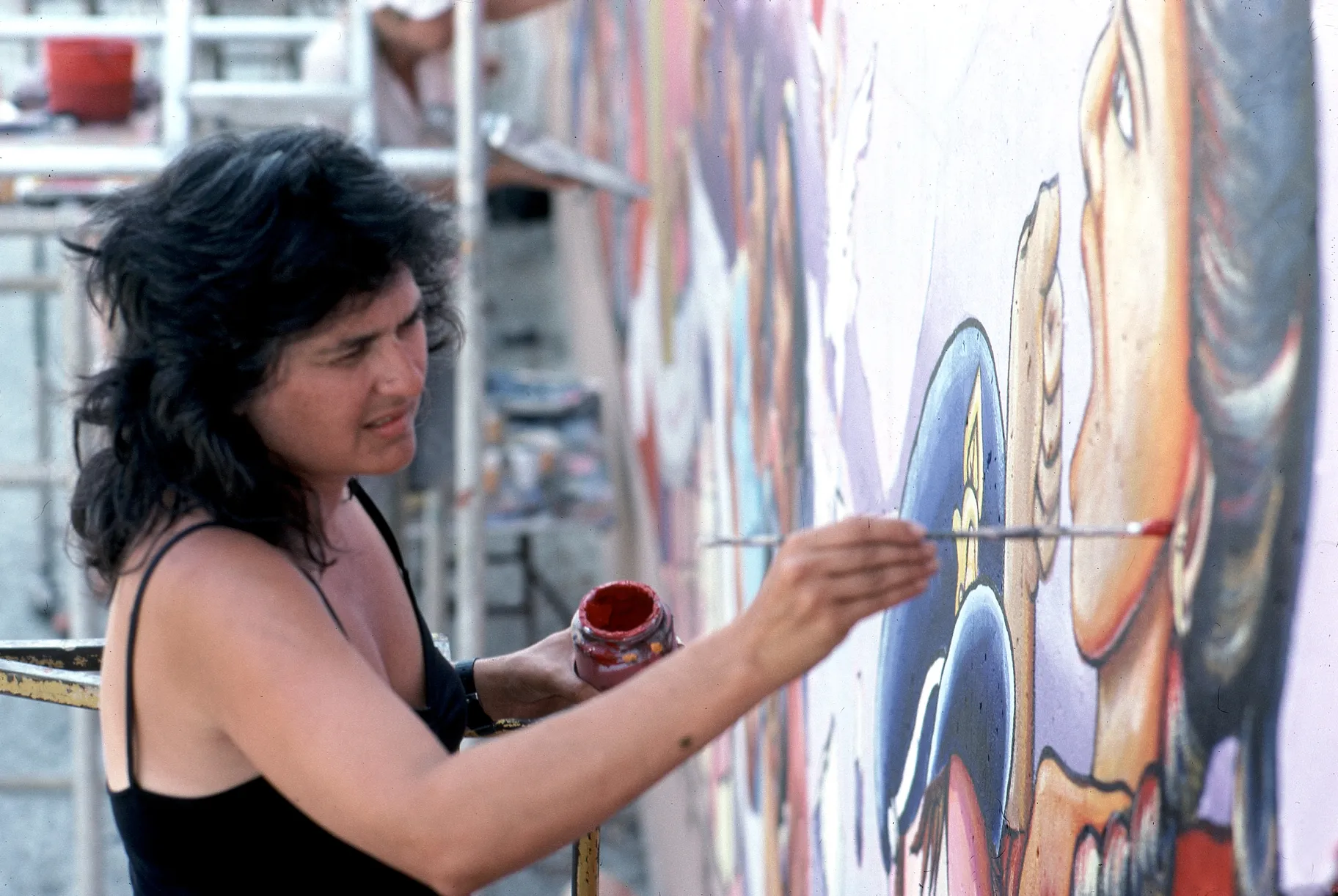Judy Baca’s murals have decorated local buildings and walls for decades — the most notable being “The Great Wall of Los Angeles," which is a half-mile stretch along a concrete flood control channel in North Hollywood, depicting California’s history through the eyes of women and people of color.
Baca grew up in Watts, where attending art exhibits wasn’t the norm. Her work focuses on the Latino and Black families in her community — their lives, struggles, and histories. That same community helped her paint “The Great Wall.”
Her life is the subject of a new LA Times short documentary called Baca.
Judy Baca explains to KCRW that collaboration is important in her process because public artwork is “a public voice,” which profoundly differs from painting on an easel. Who the artwork is designed for also influences the method of creating it.
“For the people who actually participate in the making of it, it's actually not simply done as a solitary practice. … You can't really paint a half a mile by yourself. It's important that you work with others. And then of course, the question is: What others and who and why?”
She adds, “So my work has developed [by] looking at the place that I'm going to paint, looking at the people who surround that place and who were from that community, engaging them in that process, so that the work does really become something that's related to them.”
For “The Great Wall,” Baca invited young people from troubled neighborhoods to get involved.
“I was interested in actually looking at the people who were writing on the walls, and engaging those who wrote on the walls to actually say something more articulate, to have a bigger statement, to move from just simply … ‘I am here, this is my name, I live in this neighborhood,’ but perhaps something that was more about their culture and about their experience, and might give them a sense of larger pride in who they are and the history and heritage of their … families.”
Mexican American filmmaker Alejandra Vasquez, co-director of the short documentary, says she chose “The Great Wall” — out of Baca’s decades of murals — because that work is continuing today.
Vasquez recalls, “Judy and her team did an excellent job at archiving everything. I mean, they gave us so much, way more than we could have ever used. … The footage from the 70s, it’s so textural, it's so stunning, it's so colorful. And you really get a sense of Judy as an artist, who is an activist, who's an educator, who cares about young people, and is really bringing them into the process.”
Plans are in the works to expand the wall into a full mile. Baca explains that the eight-year project, funded by the Mellon Foundation, covers prehistoric times to the 1950s in the first half-mile. “Now we're coming back on the opposite side of the river. And we are starting with the 60s and bringing it up … to contemporary times.”
She continues, “It's a massive undertaking. We're having to do deep research, we're working with thought leaders, we're working with activists and historians and people who are advising us, community members. And [we’re] drawing down information and creating a concept that is a narrative, more intent on the metaphors and the experiences of people's lives.”

Judy Baca paints her mural in the 1970s. Photo courtesy of LACMA.
She notes that painting the mural is not happening in the LA River, like before.
“The last time we painted in the river, we had a major terrifying scare, in which we had a flood. And then the kids went down trying to save our materials and equipment. And one of our people got washed down the channel six and a half miles. She has lived to tell that story. And it was an amazing rescue, went by helicopter. … And I said, ‘That's enough, I'm not going to risk anybody else again.’ But everybody said, ‘No, you have to keep going.’ And so I kept trying to think of a way we could do this work — not in the river.”
The painting is now happening at LACMA, which she says is an amazing experience.
“We have light, we have toilets, we have water, we have … human amenities we rarely have when working in the river. And we are painting about 100 feet. There's 60 feet nearly complete right now on the 1960s. So the narrative will continue. We'll be ready for the Olympics, we hope. Of course, it's questionable as you keep working on these concepts, they get deeper and they have to be further researched. But the plan is that we'll bring this to completion, and we will have an interpretive green bridge over the top of the river, so that people can view it on the 90-foot expanse of a pedestrian bridge.”
